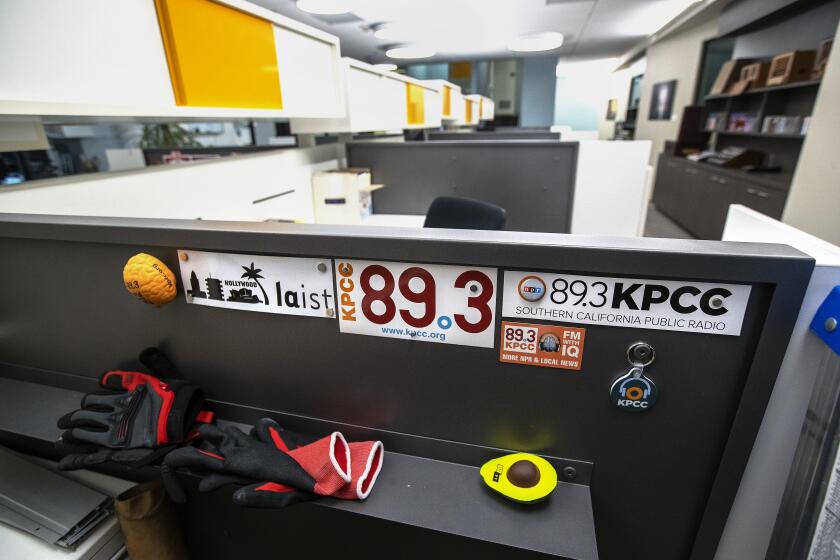For the Record Books
By keeping conscientious tabs on their investment transactions, shareholders can avoid time-consuming complications later--and higher taxes.
If you think you’re confused by all the mergers and spinoffs in the telecommunications industry, consider Ruth Burke.
Thirty years ago, she bought a few shares of AT&T; and let them “percolate” by reinvesting dividends and otherwise leaving the stock alone. What she failed to do over the years was keep a close eye on her investment.
Meanwhile, the 1984 breakup of Ma Bell created the Baby Bells, which in turn spawned a variety of new companies. Today Burke owns thousands of shares in 10 communications, media and computer companies.
The good news is that her initial $4,200 investment is worth about $200,000. The bad news: Before she can sell shares to generate retirement income, she’s got to figure out what each share cost--after accounting for splits, spinoffs and reinvested dividends--so she can determine her taxable gain.
This task is all the more complicated because she inherited some of her stock in 1991 and folded those shares into her own portfolio--again, without keeping good records. For tax purposes, the inherited stock has a different--higher--cost, even though the shares were purchased by her parents about the same time she purchased her own stock.
Investing for the long haul can be hugely rewarding--but you’ve got to keep track of how much you’ve invested or you’re in for major headaches later, cautions the 62-year-old former science teacher from Maplewood, N.J.
“It hurts just to think about it,” she said.
Why? You pay tax on your stock dividend payments as you go, regardless of whether you reinvest the dividend money. (The only exception is when your stock is held in a tax-favored retirement account.)
If you don’t account for the reinvested dividends, you pay too much income tax when you sell. Moreover, when you inherit stock, you inherit the tax basis in those shares as of the date of death. Your tax obligation boils down to the difference between what the stock was worth when you got it and when you sell. The bottom line: If Burke spends the time to figure out her true tax basis in all her shares, she’s likely to save thousands of dollars in income taxes. But without good records, that will be exceptionally hard to do.
“When I bought these shares, I was young and new to investing. I never thought much about keeping records,” she said. “Now it just seems so overwhelming because I reinvested all my dividends from the beginning--with the spinoffs, too. I couldn’t even imagine how to start figuring out the cost.”
How does she do it? If you trade regularly and have a good broker, they’ll often help. But she must start by calling AT&T;’s transfer agent to get information on AT&T;’s dividend history from 1967, when she initially bought her stock, to 1984, when AT&T; spun off the seven original Baby Bells. (Transfer agents are hired by public companies to keep records on stock and bond holders and help shareholders solve problems, such as when they lose their stock certificates or need to reconstruct their tax records.)
Then she must add the dividend amounts, which she reinvested, to her original investment to come up with a “cost basis” for her AT&T; shares.
Once she establishes her cost to 1984, she needs to use a formula to determine just how much of that cost should be allocated to each of the eight companies that resulted from AT&T;’s breakup. (The formula was provided to shareholders by AT&T; in 1984. The company’s transfer agent can provide it to shareholders who lost it.)
Once she does that calculation, she starts calling the transfer agent for each of the remaining companies in an effort to reconstruct each company’s dividend history--and consequently, her investment history.
She realizes that if she is lucky and efficient, the process will take the better part of a 40-hour workweek.
Had she started earlier, the process would have been dramatically simpler. In fact, savvy investors start a filing system for their investment records from the day they begin, says Philip J. Holthouse, a partner at the tax law and accounting firm Holthouse Carlin & Van Trigt.
An easy way to keep these records is to simply buy a three-ring binder and some dividers. Each time you buy a new investment for a taxable account, you start a new section in your binder.
In Burke’s case, she would have labeled her first divider “AT&T;” and put the original brokerage confirmation statement behind it, showing how much she paid for her shares in September 1967. At that point, all she would need to do is maintain a copy of the 1099 forms that the companies provide each year to report dividend payments to shareholders.
If she wanted to be really organized, she’d keep an annual running tally on a piece of lined paper in that section of the binder. Then when she wanted to sell, she wouldn’t even need to add anything up. Her taxable profit would be the selling price, minus the final cost number on the sheet.
How would she handle the subsequent spinoffs? She would start seven new divisions in her binder, with a sheet indicating her initial cost basis, and then add the reinvested dividends as appropriate.
The other mistake Burke made was in having her inherited stock merged into her existing stock account when her mother died in 1991. Inherited stock gets a “step-up in basis,” said Holthouse, which means that Burke’s cost, for tax purposes, is what the stock was worth on the day her mom died. That’s likely to be substantially more than the cost basis of the shares Burke purchased.
Consequently, if she’s smart, Burke will separate the inherited shares from the purchased shares and specifically identify that she is selling inherited shares when she starts to liquidate her portfolio to generate retirement income. By selling the shares that have the highest cost, she has a smaller capital gain, which means a smaller total tax obligation.
Kathy M. Kristof is a syndicated columnist and author of “Kathy Kristof’s Complete Book of Dollars and Sense.” Write to her in care of Personal Finance, Business Section, Los Angeles Times, Times Mirror Square, Los Angeles, CA 90053, or e-mail kathy.kristof@latimes.com.






